
Teaching preschoolers the character of patience lays a strong foundation for emotional growth and self-regulation. On this page, you'll find a variety of engaging activities, books, and Bible verses designed to help children learn the value of waiting and showing patience with others. Let’s explore how to make this important lesson both fun and impactful for your little one!
Definition: Waiting quietly with a happy heart and not whining
Opposite: Impatient, not waiting
Noah and the Ark (Genesis 6-9)
Noah patiently waited for years while building the ark, and then waited for the floodwaters to recede before stepping out in obedience to God’s plan.
Abraham and Sarah Waiting for Isaac (Genesis 17-21)
Abraham and Sarah patiently waited for the birth of their promised son, Isaac, despite their old age, teaching the value of trusting God's timing.
Joseph in Prison (Genesis 39-41)
Joseph waited patiently while imprisoned, trusting in God’s plan even though he was wrongly accused, eventually rising to a position of leadership in Egypt.
Hannah Praying for a Child (1 Samuel 1)
Hannah prayed and waited patiently for God to bless her with a child, showing persistence in prayer and trust in God's timing.
Waiting Is Not Easy by Mo Willems is a humorous story featuring the beloved characters Elephant and Piggie. In this book, Gerald the Elephant is asked to wait for a surprise, but he struggles with the patience required. His friend, Piggie, tries to reassure him that the wait will be worth it, but Gerald becomes increasingly frustrated. Through witty dialogue and expressive illustrations, the book teaches children about the challenges of waiting and the joy that comes when the wait is over. Spend time focusing on the pictures and do a picture walk through the story to fully appreciate the humor and emotions conveyed through the artwork.
To make a Bible connection, compare the stars Elephant and Piggie see with the stars Abraham saw when God promised him countless descendants. Discuss how both remind us of God's vast creation and His faithful promises.
Remy the Rhino Learns Patience by Andy McGuire is a heartwarming story about Remy, a young rhino who struggles with impatience. He wants everything to happen quickly, but through a series of experiences, he learns that patience is key to achieving his goals and finding joy.
Let's Be Patient by P.K. Hallinan is a charming book that introduces young children to the concept of patience through simple, relatable examples. The story encourages children to understand that waiting can be a positive experience, whether it's waiting for a birthday, taking turns, or letting things unfold in their own time. With gentle illustrations and easy-to-understand language, this book helps children grasp the importance of patience in everyday situations.
God, I Need to Talk to You about Whining by Susan Leigh is a thoughtful book that helps children understand the impact of whining and how to handle frustration with a positive attitude. Through a conversational tone, the book encourages children to talk to God about their feelings and reminds them that He is always there to listen and guide.
Are you ready to instill essential character traits in your children or students? Our 10-page Character Training Printable focuses on 20 key virtues like kindness, integrity, and wisdom. With definitions, opposite meanings, and Bible verses, it’s the perfect tool for guiding young hearts toward a strong moral foundation.
My Mouth is a Volcano: A Picture Book About Interrupting by Julia Cook explores the challenges of managing the urge to interrupt. The story follows Louis, a young boy who feels like his thoughts are "volcanoes" ready to erupt whenever he has something to say. As he struggles with his impulsive nature, Louis learns valuable lessons about patience, listening, and respecting others’ speaking time. Through engaging illustrations and relatable situations, this book encourages children to recognize the importance of waiting for their turn to talk and promotes better communication skills.
Nanette's Baguette by Mo Willems is a playful, rhyming tale about a young frog sent to fetch a fresh baguette from the bakery. The irresistible smell and feel of the baguette prove too tempting, and Nanette takes a bite. Lacking patience and self-control, she devours the whole thing before making it home. With honesty, she admits what happened to her mom, and together they return to get another baguette. In a brilliantly fun way, the entire story is filled with words that rhyme with "Nanette," making it a delightful read for kids.
The Very Impatient Caterpillar by Ross Burach is a humorous and engaging story that follows a caterpillar struggling to be patient during his transformation into a butterfly. Written similar to Mo Willems' Elephant and Piggie series, the caterpillar hilariously tries to rush through the process, learning valuable lessons about patience, growth, and embracing change along the way. With playful dialogue and vibrant illustrations, this book makes the concept of patience both fun and easy for children to understand.
In this delightful sequel to The Very Impatient Caterpillar, The Little Butterfly that Could by Ross Burach follows the butterfly on migration. Filled with doubt, the little butterfly learns an important lesson about perseverance, patience, and not stopping even when things are tough.
Waiting by Kevin Henkes is a gentle story about five toys waiting on a windowsill, each hoping for something special to happen. As they wait, the story unfolds with quiet beauty, highlighting the different kinds of waiting and the joy found in small moments. With simple illustrations and a soothing tone, this book gently introduces children to the changing seasons, weather, and the concepts of patience, anticipation, and the joys that come from waiting.
Praying to God can help us waiting patiently. It keeps our minds focused on God's sovereignty.
Personally, I can't say the word "patience" without thinking of Herbert the Snail on The Music Machine: Fruit of the Spirit album. We had this on a vinyl record and the Holy Spirit continues to bring multiple songs from this album to my mind.
Help your kindergartener develop a love for books with a handpicked list of the best books and expert tips to make storytime both fun and educational. This free packet focuses on pre-reading skills, offering practical advice to engage your child, nurture their love of reading, and build essential literacy skills—giving your child a strong foundation for reading success!
Shorten the verses as appropriate for the child's developmental level.
Rest in the Lord, and wait patiently for him.
Galatians 5:22 (NIV)
But the fruit of the Spirit is love, joy, peace, forbearance, kindness, goodness, faithfulness.
Psalm 27:14 (NIV)
Wait for the Lord; be strong and take heart and wait for the Lord.
Proverbs 14:29 (NIV)
Whoever is patient has great understanding, but one who is quick-tempered displays folly.
Ephesians 4:2 (NIV)
Be completely humble and gentle; be patient, bearing with one another in love.
Romans 12:12 (NIV)
Be joyful in hope, patient in affliction, faithful in prayer.
Colossians 3:12 (NIV)
Therefore, as God’s chosen people, holy and dearly loved, clothe yourselves with compassion, kindness, humility, gentleness, and patience.
Lamentations 3:25 (ESV)
The Lord is good to those who wait for him, to the soul who seeks him.
Psalm 40:1 (NIV)
I waited patiently for the Lord; he turned to me and heard my cry.
1 Corinthians 13:4 (ESV)
Love is patient and kind; love does not envy or boast; it is not arrogant.
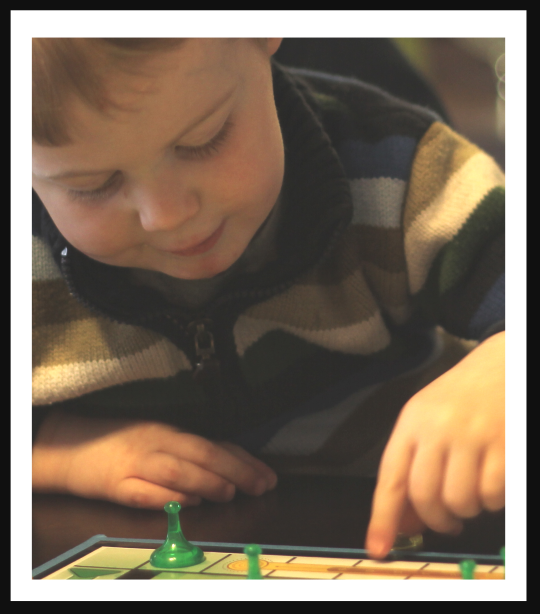
Playing games is one of the best ways to teach children patience, self-control, kindness, and many more character traits. Here are some of our favorites:
Games for Preschoolers Active Games for Kids
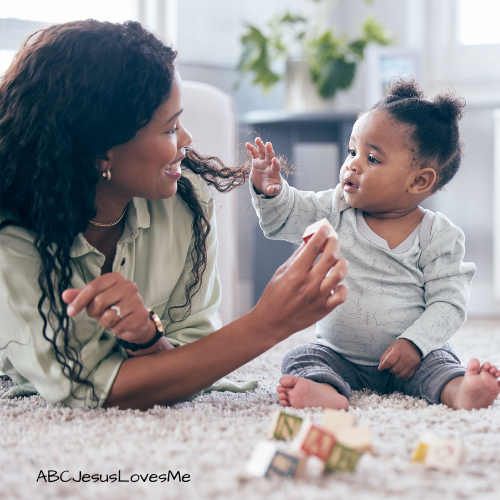
Before my children turned one, I would sit on the floor with them, building towers while saying, "Wait...wait." Once the tower was complete, I’d say, "Go!" and let them knock it down. Sometimes, I gently held their arms to help with the waiting. This simple activity helped them learn obedience, patience, and self-control. As their ability to wait improved, I built larger towers, extending the wait time.

It takes time to bake or cook foods. Involve the child is simple recipes helping to measure, stir, and set the timer. For added learning, make yeast-based recipes. Here are some of my favorite kid-friendly recipes:

Seeds take time to grow! A child must be patience as the sprouts come up through the dirt.
Materials Needed:
Directions:
Prepare the Cup: Fill the clear plastic cup about two-thirds full with potting soil. Make sure the soil is loose and not packed too tightly.
Plant the Seeds: Push the seeds gently into the soil, about 1/2 inch deep, depending on the type of seed you're planting. Cover the seeds lightly with soil. If you'd like, use a marker to write the seed's name on the cup.
Water the Seeds: Use a spray bottle to lightly mist the soil or pour a small amount of water into the cup to moisten the soil without making it soggy.
Set By a Window: Choose a sunny window where the seed will receive plenty of light.
Care for the Seeds: Check the soil regularly to make sure it stays moist. Lightly spray with water when the soil begins to dry out.
Watch It Grow: Over the next few days or weeks, watch as the seeds sprout. Because the cup is clear, the child can observe the roots growing down and the stem growing up towards the light.
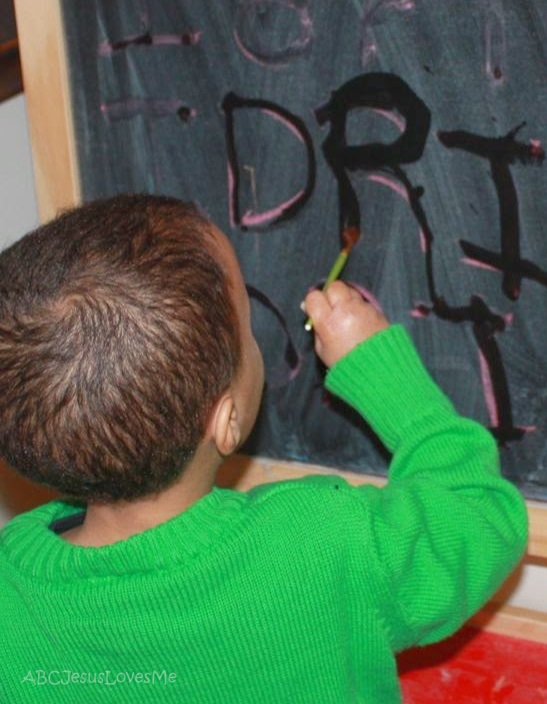
Get a child ready for kindergarten with the ABCJesusLovesMe 4 Year Curriculum. The engaging, easy-to-follow lesson plans and activities focus on age-appropriate academics, Bible stories, character training, and developmental skills, providing the perfect foundation for a child’s educational journey. Ideal for both home and preschool use, ensure that your child or students are confident and prepared for the next step!
Puzzles teach patience by encouraging children to carefully search for the right pieces and gradually work toward completing the image. The process helps them develop persistence without feeling rushed. Choose a puzzle with more pieces than the child is accustomed to (30+). I especially like the floor puzzles for preschool and elementary ages. Remember to take breaks when needed!
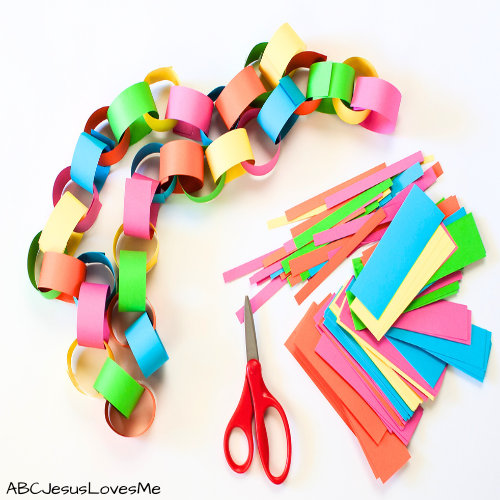
Use a calendar or paper chain to mark the days until a special event (like a birthday or holiday). Let children remove a link or cross off a day each morning, practicing patience as they wait.
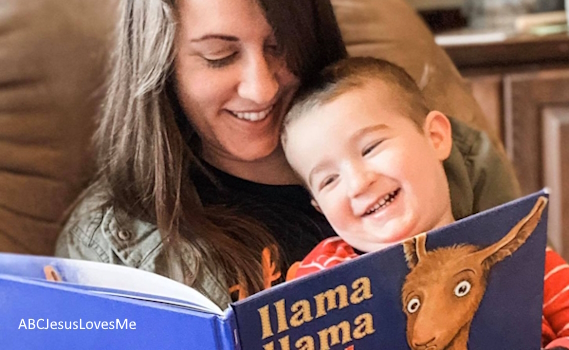
While reading a story, pause at key moments and ask the child questions about what might happen next. This helps them practice waiting for the next part of the story. This can also be done with chapter books, waiting a while before reading another chapter. Here are some of my favorites:

If you have access to fishing gear and a pond, lake, or river, let the child experience the patience needed to catch a fish. This is also a bonding experience for a child and adult.
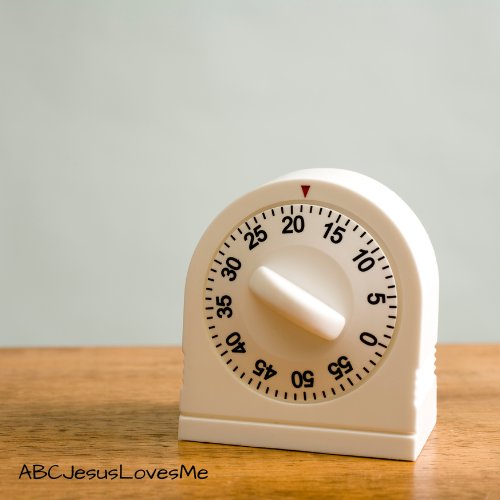
Set a timer for different activities, such as coloring or building blocks. Encourage the child to patiently complete the activity until the timer goes off, helping them focus and wait. This also builds stick-to-itiveness.

Part of learning patience is slowing down to be patient. Take the child outside to observe bugs or watch the clouds. Encourage them to sit quietly and observe how slowly nature moves, fostering a sense of patience and calmness. Discuss what you see, but also be okay with silence.